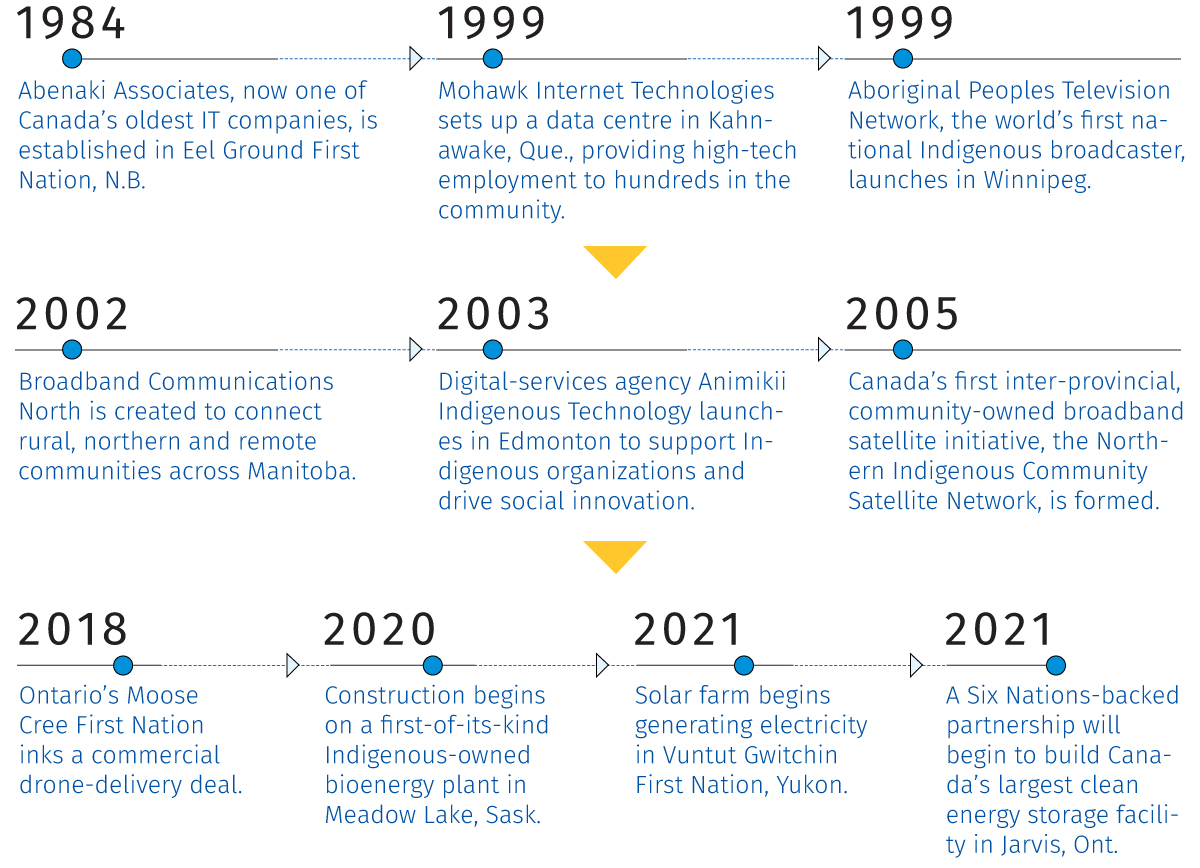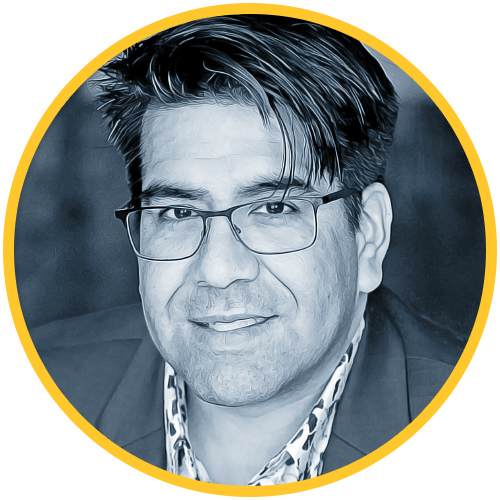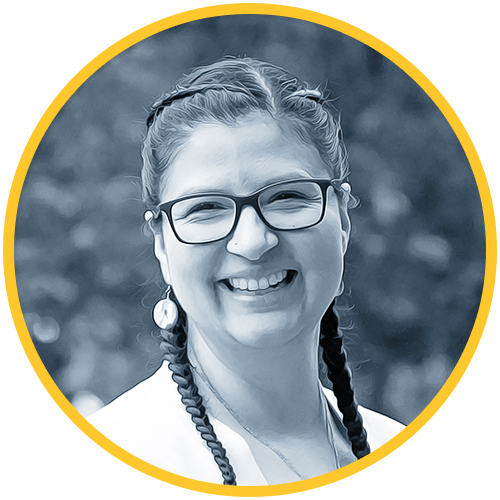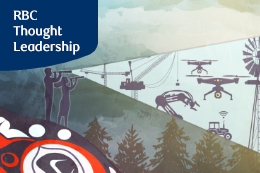The discovery of unmarked graves of Indigenous children who died at Canada’s former residential schools is a painful reminder of our history and the need for continuing focus on Truth and Reconciliation. The effects of centuries of systemic oppression continue to impact the lives of Indigenous Peoples. This report looks to the decade ahead and some of the ways in which we can help the next generation of Indigenous youth to thrive in our rapidly changing economy.
Key findings:
- In the 25 years since the Royal Commission on Aboriginal Peoples called for a new partnership between Indigenous Peoples and other Canadians, the Indigenous population in Canada has grown by 750,000.
- Indigenous youth are the fastest-growing cohort of Canadian youth, with their numbers expanding four times quicker than the non-Indigenous population. They will represent 45% of the Indigenous population by 2030.
- While this cohort represents 7% of all Canadian youth, it’s approaching one-third in the Yukon, Manitoba and Saskatchewan, 60% in the Northwest Territories, and 95% in Nunavut.
- Indigenous high school graduation rates are improving, but only 45% of Indigenous Canadians aged 24-35 have a post-secondary education compared to 71% of non-Indigenous Canadians.
- Nearly two-thirds of jobs held by Indigenous workers are at risk of a skills overhaul, as data, robotics and advanced technologies drive transformational change in sectors that many Indigenous communities depend on, like the skilled trades.
- An RBC Future Launch survey found that even though Indigenous youth frequently use digital devices, they are less confident in their digital literacy skills than their non-Indigenous peers, with a 13-percentage-point gap emerging.
- Rapid expansion of high-speed broadband Internet and greater access to digital tools will be critical for Indigenous youth to take advantage of the decentralized post-pandemic economy and position them for new opportunities in online health and education services, e-commerce and digitally-enabled mining, forestry and agriculture.

Leaders of Tomorrow
The High Stakes of a Faster Future
Over the next decade, 750,000 Indigenous youth will move through the education system and into early careers. What will they need to thrive in the Canadian economy of the 2020s? Advanced technologies are transforming every sector in the country. From mining and forestry to retail and entertainment, the demand for digital skills is accelerating—and disrupting old jobs and ways. Traditionally, financial capital was seen as the main driver of economic development. Now we know, there’s a need for capital, technology and skills to all work together. Drawing on our ongoing effort to understand the skills challenges facing all young Canadians, this report will focus on the human capital and skills needed for Indigenous youth to thrive in a technology-rich economy.
Over the past 18 months, RBC Economics and Thought Leadership led a series of conversations with Indigenous youth, educators, employers and community leaders to assess the opportunities and challenges ahead. Will this new generation be ready to turn the Fourth Industrial Revolution to their advantage? Our conversations began in-person, but the COVID-19 pandemic shifted them online. The crisis also sharpened our focus. Indigenous youth in all parts of Canada told us about adapting to online learning, honing their technical skills, and figuring out how best to fit into the digital future that’s crystalizing all around them: a world of remote sensors, automated vehicles and artificial intelligence. They shared a vision of themselves as a bridge to bring digital skills, economic opportunity and prosperity to their families, peers and communities.
“I feel like it is essential to learn more about computers, software and artificial intelligence to get a good job because everything is going to digital now.”
-Shanialyn Suggashie 23, Pikangikum First Nation, Ontario
To fully realize what the future can offer, we must be mindful of the history that brought us here. Generations of Indigenous youth have faced unique barriers to access and opportunity and have often been pushed to the periphery of economic life. In many places, pressing needs like clean water, appropriate housing and equal education continue to go unmet. RBC is committed to the reconciliation journey, and for over 25 years has been working on specific initiatives with Indigenous Peoples and communities to generate genuine and meaningful change. That work is ongoing. For this report, we focus more narrowly on where we believe the broader economy is heading and what we feel needs to happen in order for Indigenous youth to access the opportunities of the 2020s.
Their success will be key to Canada’s success—and to the ongoing process of reconciliation into the 2030s.
An Ongoing National Conversation
Public calls for better access to education and training for Indigenous Peoples have been growing for more than 25 years. The Royal Commission on Aboriginal Peoples (1996) recommended better integration between study and work through programs adapted to community realities; the Kelowna Accord (2005) sought to put $1.8 billion toward raising high school graduation rates; and the Truth and Reconciliation Commission (2015) called for educational achievement gaps to be closed within one generation.
The State of Play
Advantage: youth
- Canada’s Indigenous population grew by 42.5% between 2006 and 2016.
- The median age of Indigenous Canadians is 29 versus 41 for Canadians as a whole.
- The gap in high school completion rates between Indigenous and non-Indigenous Canadians is close to 15 percentage points.
- 45% of Indigenous Peoples aged 24 to 35 have a post-secondary education versus 71% of those who are non-Indigenous.
Improving: economic participation
- There are 25 self-government agreements across Canada involving 43 Indigenous communities, with more negotiations ongoing.
- The gap between Indigenous median income and non-Indigenous median income narrowed to 25% from 33% between 2005 and 2016.
- Indigenous Peoples are creating new businesses at nine times the Canadian average.
- More than half of Indigenous Peoples in Canada lived in urban areas in 2016.
- Canada’s Indigenous GDP is $33 billion, but could rise to $100 billion if it matched Canada’s overall per capital levels.
Needed: better connectivity
- Only 24% of households in Indigenous communities have access to quality, high-speed Internet.
- Ottawa aims to connect 98% of Canadians to high-speed Internet by 2026, and all Canadians by 2030.
- Two-thirds of jobs held by Indigenous workers are expected to require a different mix of skills.
- Demand for skills in emerging technologies including machine learning, robotics, augmented and virtual reality, blockchain, and the Internet of Things rose 36% in 2019.
The Great Skills Shift
Visit Meadow Lake in Saskatchewan these days, and you will see workers preparing the ground and installing piping and wiring for an Indigenous-led bioenergy project that will eventually supply clean power to the SaskPower grid. Or head to Yellowknife, where jewelry designer Tania Larsson is creating new pieces for her 17,300 Instagram followers. Look east to Nova Scotia’s Cape Breton Island, and you’ll find the Membertou First Nation busy 24/7 operating a world-class data centre that provides data storage and recovery for clients.
The Fourth Industrial Revolution was already reshaping how we work and live—pushing more of what we do online, disrupting established companies and industries, and forcing a rethink of education and training. The pandemic only accelerated that shift. This isn’t to say all Canadian youth are going to become coders or machine learning specialists. Rather, it is a signal that the base understanding of employment now includes the skills needed to work with digital and other advanced technologies like drones, robotics and the Internet of Things—and these expectations are growing. These shifts are affecting all of us. But for Indigenous Canadians, they present unique challenges that could impact socioeconomic progress, opportunities and the chance at fuller participation in the Canadian economy in the years ahead.
In our 2018 report, Humans Wanted, we identified the skills that will prepare Canada’s youth to thrive in the workplaces of the future. We concluded that success will depend on two things: the skills to work with people (which we called foundational skills) and the skills to work with technology (also known as digital skills). While foundational skills like critical thinking and communication have always been important, acquiring digital skills will enable youth to work with technology as it permeates the workplace, rather than compete against it.
In this latest part of our three-year Humans Wanted endeavor, we trained our skills lens on Indigenous youth. Relative to the non-Indigenous population, fewer Indigenous youth are in jobs that require future-focused skills such as critical thinking and reading comprehension. And nearly two-thirds of jobs held by Indigenous workers will need a different mix of skills in the future. Mining companies will need fewer truck drivers—and more people to remotely operate driverless trucks, as well as to program, maintain and repair them. Nurses in remote communities will have to use digital tools to communicate with and assist doctors hundreds of kilometers away.
The digital shift is upending sectors where Indigenous Peoples have traditionally built careers, including the skilled trades; natural resources and agriculture; and the sales and service sector, which covers roles such as consultants and repair workers. It’s also enabling new opportunities where Indigenous employment is high, but career advancement has been slow, including health and education.
In the years ahead, we expect more automation and more humanity, and a new creative age that bridges the two. Are Indigenous youth ready?
First, the good news. When it comes to foundational skills, Indigenous youth are confident in their abilities, according to a survey by RBC Future Launch, which asked thousands of program participants about their skills development through online surveys between 2019 and 2021, including 2,000 Indigenous youth aged 15-29. (Respondents who rated their skills at 7 out of 10 or higher are considered “confident.”)
From critical thinking to communication to collaboration, Indigenous youth rated their skillset near the same level as their non-Indigenous peers.
But the digital divide is real. The survey revealed a 13-percentage-point gulf in confidence between Indigenous and non-Indigenous youth when it comes to digital literacy. The gap was widest among those still in school and narrowed as young people gained work experience.
Confidence gap is widest on digital literacy: Indigenous youth feel less prepared across the core workplace technology skills
% of respondents who rated their skills at 7+ out of 10
Source: RBC Future Launch survey
“I’m pretty confident in my digital skills. But I think the fact that I live in a rural-ish area may limit my career success, because people underestimate my skills.”
-Shelby Anderson, 22, Gift Lake Metis Settlement, Alberta
Addressing the gap starts with the basics. The reality is, high-speed Internet still hasn’t come to large parts of rural and northern Canada, limiting online activity for many Indigenous Peoples. In 2017, the CRTC found that about 24% of households in First Nations communities had high-speed internet, compared with 97% of urban and 37% of rural households. Among Indigenous Peoples 15 years old and up, 76.4% use the Internet daily; among all Canadians, daily usage is 91%.
“The access to high-speed Internet in my community is about 2/10….Many people use their phone data to connect to the Internet. But without high-speed Internet, it is hard and takes a lot of time to access websites and Zoom calls.”
-Jaden Harper, 17, Garden Hill First Nation, Manitoba
Narrowing the gap would enable Indigenous youth to become more proficient in the use of technology and increase long-term earning potential: levelling up on digital skills has been shown to increase wages for Indigenous workers by up to 36%. Meanwhile, the cost of inaction is steep: Indigenous workers are underrepresented in high-tech sectors and only 1.2% of the high-tech workforce identifies as Indigenous. In June 2020, senior members of Canada’s tech, innovation and advanced industry sectors launched the Coalition of Innovation Leaders Against Racism (CILAR). The coalition’s mandate is to connect Black, Indigenous and People of Colour to the innovation sector by focusing on five priorities: youth skills development, job opportunities, venture and founder support, investment and funding as well as community leadership.
The risk is that Indigenous youth will be underrepresented everywhere as digital permeates every sector. In our roundtable discussions and interviews, many youth were aware that a basic level of knowledge, like email and word processing, would not be enough to get a good job, and they were frustrated by the lack of learning opportunities.
“I learned my digital skills by teaching myself.”
-Selynn Gibeault-Plain, 17, London, Ontario
Left to their own devices—literally—many are taking their digital training into their own hands, advancing their skillset through creative, non-traditional means. On TikTok, Inuk college student Shina Novalinga (@shinanova), shares short videos with her 2.3 million followers, showcasing her throat singing. Theland Kicknosway, an Indigenous teen advocate and hoop dancer, is harnessing his following on Instagram (@the_landk) to raise money for Missing and Murdered Indigenous Women, Girls and Two-Spirit people.
This tells us Indigenous youth are going to play a key role in bridging their communities to the digital age. Imagine how much more they could do if given the right tools. In August 2020, amid the COVID-19 push toward online learning, De Beers Group donated 117 new laptops to schools in seven Indigenous communities in the Northwest Territories and 10 refurbished computers to the Yellowknife Public Library. As part of the Shaw acquisition, Rogers committed $1 billion to the Rogers Rural and Indigenous Connectivity Fund and said the company will consult with communities to create Indigenous-owned ISPs.
Optimism about the future was a key characteristic in the roundtables and the survey, where nearly 40% “strongly agreed” when asked if they were optimistic about achieving their goals. Many young people were setting their sights on new cities and post-secondary institutions to build their skillsets and set themselves up for promising careers.
“One of my toughest decisions I made was coming to live in the city and continue my education.”
-Logan Mason, 18, Winnipeg, Manitoba
As young people navigate this transition, the desire for mentors is strong. This is complicated by the fact that many youth do not see Indigenous Peoples in the roles they aspire to, given the rapidly changing economy—but where they exist, they can be key to personal and spiritual development and help the next generation achieve strong outcomes.
“Some supports that would best set me up for success as I complete my education and begin my career are better Internet access, a mentor or someone there for me.”
-Gwendolyn Grimoldby, 17, Ingersoll, Ontario
Early, positive career experience is emboldening young Indigenous Peoples: the Future Launch survey found that employed Indigenous youth are even more confident when it comes to communication, collaboration and critical thinking than their non-Indigenous peers. Most notably, employed Indigenous youth rate their persistence (or the ability to manage under stress) higher than non-Indigenous youth—at 76% compared to 69%.
Basic skills can’t be overlooked
Literacy and numeracy skills—the great equalizers in terms of economic incomes—are lower in Indigenous communities.
Our roundtable with Indigenous employers stressed the importance of work exposure for Indigenous youth, to build not only future skills but—perhaps more fundamentally—these basic skills. Leona Baptiste, HR Director at Osoyoos Indian Band Development Corporation, says poor reading skills are preventing many youth from getting their first jobs and moving up the skills ladder.
Employers can play a key role in supporting basic education and life skills during the transition to the workforce. They can also challenge themselves to recognize all types of learning among this incoming generation of Indigenous youth—on the job and through online certificates and land-based knowledge—in order to close the achievement gap.
Time to leverage strength in skilled trades
Trades and transport are fields in which Indigenous workers have improved their income and representation across age groups. This is influenced by a strong connection to Canada’s resource economy. Indigenous and non-Indigenous youth complete apprenticeships in the Red Seal trades at almost identical rates. However, on-reserve learners aren’t accessing apprenticeships at the same rate as off-reserve youth, and they often miss out on the in-class portions where emerging skills are introduced. The trades are increasingly influenced by digital developments, and staying on top of them is critical. Paper blueprints are out, and project schematics are mostly shared digitally on tablets. Road construction vehicles are GPS-guided. And smart glasses help train new electricians and welders with key visual prompts and instant measurements.
Indigenous technological innovation through the decades

Tomorrow’s Digital Leaders
We’ve outlined the challenges and opportunities Indigenous youth face as they carve out careers in a rapidly digitizing world, and noted the need for more role models. Here are four emerging categories of digital leaders that are demonstrating the way forward.
The Early Adopter
These familiar faces in the community—teachers, librarians, council members—are championing digital skills acquisition at the local level. When matched with accelerated training and resources, they become knowledge distributors within the community. They spark new forums for youth learning, like robotics teams and hackathons, and their skills will be in demand across education and local government.

Blaire Gould, 36
Eskasoni First Nation, Nova Scotia
Executive Director: Mi’kmaw Kina’matnewey
“I’m a tech-fanatic, really just truly interested in it. Once teachers become more comfortable with technology, it’s something that compliments or alleviates your work—and gives the best opportunity to the child.”
Blaire grew up during the tech boom of the 1990s, and never looked back. From typing classes in middle school, to her first cell phone, to attending the local high-tech high school, Blaire’s early life was shaped by the shift online. For a national high school competition about starting a business, her group’s business case included making a website—education and technology were two sides of the same coin. Blaire went on to study at Cape Breton University and St. Francis Xavier University, and embarked on a career focused on sharing her love of language with the next generation—with some help from technology, of course. Even one of her early projects, translating Robert Munsch books into Mi’kmaw, capitalized on tech advancements: the translated books included a CD to hear the Mi’kmaw readings.
Fast-forward to today, and as the executive director of Mi’kmaw Kina’matnewey (MK), Blaire designs and develops resources that put a tech spin on the standard Nova Scotia curriculum in Mi’kmaq communities. (In 1998, an agreement with the federal and Nova Scotia governments turned over local control of education to 12 of 13 Mi’kmaq bands—one opted out.) She’s co-created 40 language apps, brought in green screens so students can make their own videos, and recently deployed 3D printers (plus training) to every school that MK oversees. These digital tools make learning fun, and (the results show) more effective. When Blaire started her own schooling in the early 1990s, just 20% of Mi’kmaw students graduated high school in Nova Scotia. Today, it’s about 90%.
Emerging jobs:
Education administrator
Technology teacher
Workplace trainer
Library technician
Skills needed:
Managing resources
Persuasion
Problem solving
Verbal communication
Leading the way:
Indigenous Teacher Education Program (BC)
Prepares Indigenous students to become effective educators for public, band, and independent schools in B.C., with a focus on identity and cultural heritage.
Indigenous Leadership Development Institute (MB)
Builds leadership capacity in Indigenous people with specific training, including an online learning package.
Centre for Indigenous Innovation and Technology (ON)
Provides technology training, increases Indigenous representation in the tech industry in Canada, and promotes problem-solving using technology with an Indigenous lens.
The Knowledge Translator
These are the experts and creators bringing Indigenous culture and ways of knowing into the knowledge-based economy. They are able to operate between traditional and digital spaces, elevating ideas and developing new markets. Knowledge translators are connected to land, language and their Elders and plugged into advanced technologies. They will find opportunity not only in tech through product design or animation, but also in the sciences, through applying traditional knowledge to contemporary challenges.

Mick Appaqaq, 29
Sanikiluaq, Nunavut
Technician: SIKU mobile app
“The future for the Arctic is uncertain, but we have all these tools now that we can utilize. You’re able to transfer knowledge from your community to neighbouring communities by posting on the app.”
Mick was five when he first started going out to hunt and fish on the islands that dot Hudson Bay. There were no cellphones, no apps—just his father, passing down traditional knowledge. Mick’s early exposure to technology was limited; it wasn’t until high school that he took a computer course and learned about software like Excel. He pursued higher education in Ottawa, completing a two-year program in Advanced Inuit Studies through Nunavut Sivuniksavut, where he continued to build up his computer skills in the library.
When he returned home, Mick saw opportunities to combine his traditional knowledge with technology. Internet connectivity in the territory had improved. Mick took a job as a constituency assistant to a Nunavut territorial lawmaker, using email to reach communities across the vast northern territory. Mick now works as a technician for SIKU, an Inuit-led social network that’s developed an app to help hunters share real-time knowledge of ice conditions and animal behaviour. For Mick, who said he’s motivated to advance Inuit well-being, the app’s purpose is key: sharing information on sea-ice conditions helps ensure hunters’ safety in the short term and serves a longer-term effort to collect and store climate change-related data. Mick grew up monitoring sea ice with a harpoon. Today, monitoring it on an app is simply part of the long march of technological progress: the generation before him, as the Inuit advocate Piita Irniq put it, went from igloos to microwaves.
Emerging jobs:
Digital artist / animator
Climate scientist
Documentarian
UX designer
Skills needed:
Mathematics
Research skills
Land-based knowledge
Indigenous language
Leading the way:
Aabijijiwan New Media Lab (MB)
Provides Indigenous students with access to interactive studios with sound, projection, VR, video, animation, and more for learning, skills training, and development.
Offers an Indigenous Knowledge and Science program where science and math learning is complemented by courses in Indigenous Environmental Science.
Aboriginal Territories in Cyberspace (QC)
Ensures Indigenous presence in the web pages, online environments, video games, and virtual worlds that comprise cyberspace.
The Digital Enabler
These are the skilled tradespersons, project managers and consultants building the physical infrastructure to support digital opportunities. Their efforts are paving the way for better connectivity, as well as developments in renewables and the green economy. With a mix of technology and trades, their skills will be valued by various employers, from telecoms to construction to energy-servicing operations.

Joe Wabegijig, 39
London, Ontario
CEO: Phoenix Smart Infrastructure Inc.
“My hope is to establish a stronger presence as an Indigenous business leader in this space. And see more communities adopt leading practices of smarter infrastructure to improve the well-being of communities across Canada.”
Joe was in his 20s when he first heard of a professional engineer. Growing up on the Wikwemikong First Nation on Manitoulin Island, he says there was little exposure to career options. But he’d inherited a mindset from his grandfather to identify where the future is going, and get there first. That’s how Joe explains his decision, after high school, to attend Ontario’s Fleming College for home and building automation—a fairly new industry at the time. The program was a steep learning curve for someone with no background in electronics, but Joe went in with strong math skills and graduated with the ability to install audio-visual and security systems. Working on large-scale projects in Ottawa, including at the House of Commons, he encountered civil engineers and it clicked: this was a way to help Indigenous communities with housing and water challenges.
Joe went back to school for civil engineering and worked for several Indigenous communities before landing a role advising the Minister of Indigenous Services on infrastructure, including drinking water. Again, Joe saw how technology was changing the game and decided to launch his own consultancy, focused on the next generation of infrastructure. As CEO of Phoenix Smart Infrastructure, Joe explores what advanced technologies can do for Indigenous communities: he sees blockchain and the Internet of Things as a way to close the data gap and develop smarter, more sustainable infrastructure to improve community well-being for the decades ahead.
Emerging jobs:
Electrician
Network administrator
Telecom installer
IoT device specialist
Skills needed:
Reading
Project management
Design software
Installing
Leading the way:
Building Environmental Aboriginal Human Resources (AB)
Offers environmental workforce training programs for Indigenous communities to develop local environmental skills and foster green career opportunities.
Diggin’ Digital Professional Development (SK)
Provides on- and off-reserve teachers with the resources, materials, and professional development opportunities to incorporate STEM and ICT into lesson plans for Indigenous youth in culturally relevant and appropriate ways.
Prepares Indigenous youth for careers in the trades with reading and writing supports, and preparations for apprenticeship entrance exams.
The Service Connector
These are the e-commerce adopters, telehealth providers and online educators solving the twin problems of distance and integration with the broader economy. By breaking down stubborn barriers, they’re increasing access to critical services for Indigenous firms and communities, and showing both sides new opportunities in retail, education and health care. They will need steady access to the latest technology, training and resources to strengthen these new linkages within and beyond their communities.

Mallory Yawnghwe, 35
Saddle Lake Cree Nation, Alberta
Founder: Indigenous Box
“I would love to see my community thrive. If I can find new customers for Indigenous entrepreneurs and businesses, then I know I’ve done my job. We’re a tool to help them reach those new markets.”
Mallory would never have predicted she’d launch an online business. Growing up, she was strong in math and problem-solving, but digital skills weren’t taught at her high school. Her family didn’t get a home computer until she was 16—and even then, it only had dial-up Internet. After some time out of the education system, Mallory moved to Edmonton and found her way back to school, developing her digital skills in the library and eventually obtaining a business degree from MacEwan University. There, she learned about social enterprise and business with a purpose, which resonated with Mallory as someone who’s passionate about elevating Indigenous Peoples.
When the pandemic hit and more commerce shifted online, Mallory began building simple websites for small businesses using interfaces like Squarespace. This experience gave her the idea for Indigenous Box, a subscription box service to showcase products from Indigenous entrepreneurs across the country. Mallory designed and built the Indigenous Box website on her own, and with a coding class now under her belt, she runs the rapidly growing startup from her basement—for the time being. Mallory’s goal is to run a sustainable, profitable business that uses modern tools to bridge the gap between the Western and traditional worlds she inhabits.
Emerging jobs:
Telehealth nurse
Supply chain specialist
E-commerce customer service provider
Education navigator
Skills needed:
Collaboration
Business writing
Customer service
Data management
Leading the way:
Offers Indigenous-led expert training on getting your business online.
Keewaytinook Okimakanak (KO) eHealth Telemedicine (ON)
Provides access to education sessions, training and support for health staff and community front line workers in remote communities in Northwestern Ontario.
Breaks down student learning barriers by connecting Indigenous partner schools across Canada with virtual field trips and remote mentorship.
Pathways Forward
We’ve looked at how Indigenous youth can thrive in a more inclusive digital future; but charting the way forward will take leadership and partnership. Here, we consider the various constraints faced by educators, employers, communities and government—and how they’re finding solutions.
Educators
You can’t teach digital skills if your community doesn’t have the Internet. That message was front and centre in our roundtable discussions with Indigenous educators, who face a number of challenges in preparing students for a world of advanced technologies. They liked the idea of a mandatory course in digital skills, but suggested certain foundations need to be in place first, including broadband connection, device access, and teacher training. In short, the digital literacy gap will persist as long as a funding gap does. Educators also raised concerns about how to connect students to careers in a rapidly changing economy. There is a lot of uncertainty about what skills will be in demand for tomorrow’s jobs—and educators from on- and off-reserve pointed out that the current youth employment crisis signals a disconnect between what students hear from school advisors, and the realities that await them.
The first challenge for educators is trying to get kids to complete high school. The second is helping them transition to post-secondary education. Career role models, a better sense of where college could lead, and the funds to go, are all critical. At Six Nations Polytechnic STEAM Academy in Brantford, Ontario, students attend the first STEAM-focused (science, technology, engineering, arts and math) secondary school in Canada. This program wasn’t developed in isolation. With IBM as a partner, it is able to offer an Ontario Secondary School Diploma and a tuition-free two-year college diploma, with summer job opportunities along the way—plus a guaranteed job interview with IBM upon graduation.
National programs can also reach students who might otherwise have limited options. Indspire helps Indigenous students across Canada complete their post-secondary education by providing bursaries and scholarships. About 90% of its Building Brighter Futures recipients graduate and find jobs—and the organization’s strong relationships with Indigenous employers mean 70% of them work in fields that support the Indigenous community.
Employers
Employers value tech-savvy job candidates—but a basic skill set is of primary importance. In our roundtable discussions, we heard that too many Indigenous youth aren’t prepared for the workforce. More job placements are crucial to bridging the gap between school curriculums and working life. This will also give Indigenous youth more exposure to different types of jobs, so they can see the opportunities that exist with their own eyes. Something else they need to see with their own eyes: diversity. Indigenous youth need to see themselves broadly reflected in the workplace. For the companies that are hiring them then, the job doesn’t stop with successful recruitment: coaching, mentoring and supervising supports are also critical.
Employers that provide “wrap around” or secondary supports are more successful in retaining and motivating young workers, recognizing that a new hire is a person they’re investing in. Bruno Manufacturing Ltd. in Alberta retained 90% of the staff they recruited for a two-year off-reserve construction project by providing family housing, mental health support and peer accountability. The Osoyoos Indian Band Development Corporation in B.C. has an impressive record of pursuing economic development opportunities across 13 different lines of business, including tourism, construction and wine—and equipping band members with the skills to take on new jobs. It tailors its manager training programs to each role, focusing on skill-building for a period of up to two-years. Unemployment on the reserve is less than 3% and 20% of band members are in senior positions. To widen their own impact, national companies need to replicate these ideas and develop potential from the ground up. A good start: Suncor launched an Indigenous Mentorship Program that has grown by 50% since 2018.
Community
Longstanding gaps in funding and resources have left Indigenous communities and youth to count on programs and services from other actors, including not-for-profits, artists and athletes. These supplementary players provide access to skill-building and extracurricular activities that aren’t otherwise available. From dance classes to robotics clubs, youth learn valuable life skills, and build resiliency and self-confidence. What’s still missing is a way to recognize students for the skills they’ve attained through extracurricular activities, such as micro-credentials, so they can more easily demonstrate their abilities to future employers.
As more community groups specialize in digital skills, we are approaching a tipping point in knowledge acquisition. In Nova Scotia, Digital Mi’kmaq focuses on introducing Indigenous students and educators to the core fundamentals of the knowledge economy, including coding, robotics, big data and web development. Its enriched educational programs, workshops and events across Atlantic Canada have reached 14,000 students and educators. Looking west, IndigeSTEAM has started a robotics club on four reserves in Alberta. In 2019, it sent an Indigenous-majority team to an international robotics competition in Dubai. The First Nations Technology Council in B.C. has partnered with more than 150 Indigenous communities across the province to provide advice, insights and technology-related training. Corporate actors are important in this space too, funding youth organizations like Actua Canada and Right to Play.
Government
Power dynamics are shifting—and that’s opening up new opportunities. Indigenous self-governance gained momentum in Canada in the 1990s, and calls for meaningful consultation and sustainable economic opportunities have grown louder in the wake of the Truth and Reconciliation Commission’s 2015 report. The effects of economic distortion are still felt today, but land settlements and investment have led to the broad expansion of Indigenous ownership, and greater capacity in private partnerships. Although more private sector partnerships are being reached, some bands are still learning what they should ask for. Both sides should strive to reach deals that are mutually beneficial, and provide young people with the chance to learn and advance new skills.
Leadership can make or break the push for progress and partnerships. In northern Manitoba, economic reforms under Onekanew (Chief) Christian Sinclair successfully turned the Opaskwayak Cree Nation’s business wing profitable, with investments in the cannabis sector, aerospace and infrastructure renewal. Internet access fosters this growth. Indeed, the completion of a fibre-optic network through a Bell MTS partnership was the first of its kind in Manitoba.
In B.C., more than 80% of the Haisla Nation’s band revenue comes from non-government sources. A nearby liquefied natural gas project provides key economic leverage, with land and construction agreements generating long-term revenue—which is then reinvested in the next generation. The newly-built Haisla Community School has smart boards in each classroom, blending culture, science and technology.
Properly directing resources is key, and the First Nations Education Council of Quebec offers a lesson in how to do so. It collaborates with 24 schools across 24 First Nations, a cooperation that culminated in the 2011 establishment of Kiuna College—the only First Nations post-secondary institution in Quebec—to produce workplace skills for local employers, within an Indigenous-focused education. On a national level, the Truth and Reconciliation Commission has challenged the federal government to provide sufficient funding to close the education gap between Indigenous and non-Indigenous students within a generation.
Access to Capital
For Indigenous youth to access the opportunities of the Fourth Industrial Revolution, new businesses, partnerships and services need to be cultivated within Indigenous communities. Significant investment will be needed to bring about these opportunities. The Indigenomics Institute points to the potential of a $100 billion Indigenous economy through strengthened economic capacity.
Yet, for many Indigenous-owned businesses and communities, access to capital remains a central obstacle to fully participating in the broader economy. In 2017, Waterstone Strategies estimated that First Nations and Inuit owned businesses used only 0.2% of total available credit in Canada, and were able to access about 9-11x less market-based capital than most Canadian firms. Indigenous Peoples continue to face structural and systemic barriers to financial security, from restrictions under the Indian Act on asset ownership to racial bias of lenders.
What’s needed now are new capital channels and business advisory services to connect entrepreneurs with capital. Organizations like the National Aboriginal Capital Corporations Association (NACCA) need to be supported in their work. It’s a network of 59 Aboriginal Financial Institutions (AFIs) stimulating economic growth by providing 50,000 loans totaling $3 billion to Indigenous-owned businesses.
Recommendations
Equipping the next generation of Indigenous Canadians with future-focused education, skills and opportunities is a shared responsibility. Governments, employers, educators and communities each play key roles. Some measures that may help:
- Fulfill the federal commitment to provide high-speed Internet, including broadband and related infrastructure to every Canadian by 2030, prioritizing underserviced Indigenous communities.
- Increase access to venture capital, with special focus on the new Indigenous Growth Fund, a $150 million commitment from the Government of Canada, Business Development Bank of Canada and other government agencies, which can be a signal for future investments.
- Allocate additional funding for digital devices and technology courses in primary and secondary schools, both on- and off-reserve, under the transfer formulas used by Indigenous Services Canada and the provincial and territorial education ministries.
- Close the gaps in access to work-integrated learning for Indigenous youth, by entrenching the subsidy for Indigenous students under the federal Student Work Placement program, expanding remote WIL options and through matching tools between employers and candidates.
- Expand academic bridging programs at universities, colleges and apprenticeship programs that boost fundamental and digital skills for Indigenous learners and improve outcomes in higher learning.
- Address the significant gaps in Canada’s Indigenous labour market data by increasing funding for data collection and coordination under the federal Indigenous Skills and Development Training program.
- Leverage recent investments in online education by school boards and post-secondary institutions to expand STEM course offerings for Indigenous students through high-quality remote and hybrid learning in their schools.
- Expand representation of Indigenous culture, languages and content in online spaces by making digital-first approaches a priority for arts councils, and increasing the reach of Indigenous social media influencers who are promoting their culture online.
This RBC report was developed within our Humans Wanted research program. It is informed by a series of roundtables and interviews with Indigenous youth, leaders, employers and other stakeholders over the course of the last 18 months. It leverages findings from RBC Future Launch participant surveys, including 2,000 Indigenous youth, as well as employment data analyses from the Census and other Statistics Canada products. Future Launch is RBC’s decade-long commitment to helping Canadian youth prepare for the skills economy of the 2020s and beyond.

Download the Report
About the Authors
Andrew Schrumm is a former lead researcher on RBC’s thought leadership team, where he examined how Canada can enter the 2020s as a diverse, innovative, and sustainable nation. He managed RBC’s future skills research project on skills-based job mobility, life-long learning, and the potential of automation in our economy.
Sonya Bell joined RBC’s Thought Leadership and Economics team as a Senior Manager, Content Delivery in 2018, coming from Queen’s Park where she was a senior writer to the former Premier of Ontario. Previously, Sonya worked in journalism as a producer at CBC and as a federal political reporter for iPolitics. Between Parliament Hill and Queen’s Park, she spent two seasons as a comedy writer on This Hour Has 22 Minutes.
Tracee Smith is the Founder and CEO of Outside Looking In, the largest national charitable organization empowering Indigenous youth to explore their full potential. A member of Missanabie Cree in northern Ontario, she specializes in corporate strategy, finance and Indigenous affairs and has held positions with TD Bank, TD Securities, TE Wealth and has advised clients such as Nestle Waters, Enbridge and Imperial Oil. She holds an MBA specializing in Community Economic Development and a Masters in Finance from Queens University. She also holds a BA in Dance from York University and was the first professional dancer to perform for the Governor General of Canada. She currently sits on the Board of the National Arts Centre, Smilezone Foundation and The Shoebox Project.
This article is intended as general information only and is not to be relied upon as constituting legal, financial or other professional advice. A professional advisor should be consulted regarding your specific situation. Information presented is believed to be factual and up-to-date but we do not guarantee its accuracy and it should not be regarded as a complete analysis of the subjects discussed. All expressions of opinion reflect the judgment of the authors as of the date of publication and are subject to change. No endorsement of any third parties or their advice, opinions, information, products or services is expressly given or implied by Royal Bank of Canada or any of its affiliates.


 Learn More
Learn More